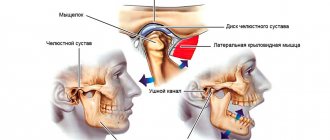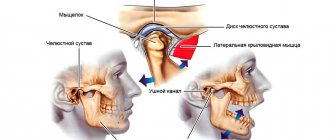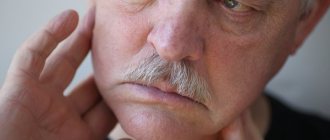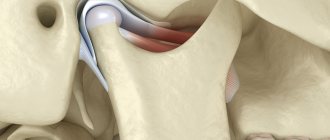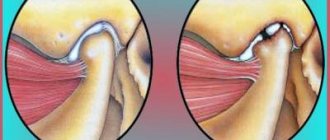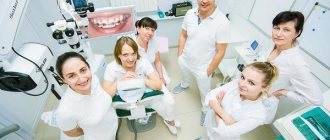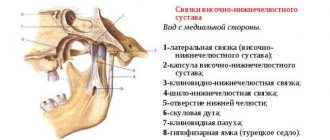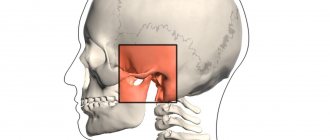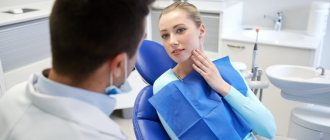Jowls (correctly - jowls) - this word refers to saggy, flabby cheeks that deform the line of the lower jaw and chin.
Jaws on the cheeks age the face by 5-10 years, making it sad and tired. They cannot be hidden with makeup. And even celebrities who regularly take care of themselves do not always win for an even lower jaw line. See for yourself.
| Helen Mirren | Meryl Streep |
| Bruce Willis | Robert Downey Jr |
| Catherine Deneuve | Sharon Stone |
| Al Pacino | John Travolta |
| Monica Bellucci | Sophia Loren |
Do you think that this verdict cannot be appealed? In this article we will talk about methods that really help. But first we need to determine who the enemy is and with whom we will fight.
Why do jowls appear?
Our face consists of 57 muscles and fat, which is concentrated mainly in the cheek area. This cheek fat, in honor of the French anatomist Marie François Bichat, has its own name - Bichat's fat pads, and reaches a very impressive size.
With age, any person experiences drooping of facial tissues. The lower jaw to the left and right of the chin is devoid of muscle support (this can be easily seen in the figure), and nothing prevents sagging in this area.
As a result, characteristic sagging is formed along the jawline - “bulldog cheeks”, which make the facial contour wavy.
In thin people, shaving is usually due to excess skin and only skin. In all other cases, sagging is enhanced by subcutaneous fat or descending lumps of Bisha
It is believed that Bisha's structures contribute not only to the “blurring” of the contour of the lower jaw, but also cause nasolabial folds and form sufas on the face.
Most often, sagging skin in the lower jaw area is the visible result of a number of invisible changes that have occurred to our face over the years:
- Low collagen and elastin content. Collagen inside our skin is like the reinforcing mesh in buildings made of monolithic concrete. Only with age does the old collagen “break down”, and the new one is not synthesized actively enough. This causes the skin to lose support and elasticity.
- Weakening of the facial muscles, which cannot hold the skin and subcutaneous fat high in the same place. Thus, as a result of weakening of the cervical platysma muscle, a “goiter” and a double chin are formed in the neck area. The same mechanism underlies sagging cheeks.
- Due to a lack of certain elements and hormonal changes, the bones become thinner and the face becomes flattened. Cheekbones lose their “sculpted” volume. Deprived of this important support, all facial structures, like on a sled, literally “slide” down.
- An age-related decrease in the amount of melanin pigment in the skin makes it vulnerable to sunlight and accelerates aging.
A face with jowls is not just a problem of age. There are other reasons too. Individual facial characteristics, stress, constant exposure to wind and cold, smoking, alcohol, coffee, poor nutrition, certain medications, endocrine diseases, rapid weight loss, a poorly developed chin and even the force of gravity all contribute.
The risk of developing early jowls is especially high in heavy individuals with a large amount of cheek fat. These are overweight people and those who, at normal weight, inherited chubby cheeks.
The same factors apply to men. But due to gender characteristics, they have less facial fat. Their skin is not subject to hormonal fluctuations during pregnancy and menopause; it remains dense for a long time. Therefore, men's jowls appear 10-15 years later.
Expert comment:
“The appearance of jowls in youth is usually a consequence of being overweight. In all other cases, this is an obvious sign of age.
. But if jowls appear after 40 years, there is no need to urgently remember the forgotten cosmetologist.
Don't get me wrong, you definitely need to continue to take care of yourself. But creams, face masks, peelings and mesotherapy do not work on jowls. And do not rush (no matter what they tell you) to invest money in fillers and 3D mesothreads - they do not work against sagging of the lower jaw, and you will simply waste your money.
To get rid of jowls on your face after 40, you need to work with the causes, not the consequences.
.»
Andrey Iskornev, plastic surgeon.
The mechanism for the formation of jowls on the face is the drooping of intrabuccal fat.
What and how we eat
Human jaws were designed for stone age food, yet we are living in the era of the Big Mac. Insufficient chewing activity is now exacerbated by the ingestion of fast food, which constitutes a significant part of children's diets in most countries of the developed world. Other soft foods, such as fruit, yoghurt and baby purees, also deprive your baby of much-needed jaw exercise. The same goes for children whose parents cut meat and other chewy foods into small pieces for fear of choking. As a result, children do not learn to coordinate the movements of the tongue and jaw to extract nutrients from food and do not develop the chewing muscles that play such an important role in normal jaw development.
Changes in diet over the last ten thousand years since we were primarily hunter-gatherers have been well established by anthropologists, although many questions remain about the exact chronology. Man gradually moved from rough meat, tubers, nuts and fruits to all kinds of soft foods such as cutlets, soups, stews, bread and other baked goods, as well as specially bred sweet and juicy fruits. However, there is much less talk about significant changes in the way we eat and how we feed young children. Among all these changes, one seems particularly important in explaining the jaw-related problems common in industrial society. If you eat solid food, then, oddly enough, you have to chew a lot. The more you chew, especially at a younger age, the stronger the jaw muscles become and the more massive it grows. Now, when you sit in a highchair or at the table of your favorite restaurant, you hardly have to chew.
Insufficient chewing activity in the early years of life can affect the development of the entire face, jaw and airways
It doesn't take a scientist to intuitively understand the observed trend away from chewing. Even the writers and animators of Pixar's dystopian film WALL-E knew this. They demonstrated that the faces and bodies of people on space travel were changed not because of genetics, but because of eating liquid foods, drinking hamburgers through straws and lack of physical activity.
Storytel is an international audiobook subscription service. The Storytel library contains audiobooks of almost all genres, from classics and non-fiction to lectures, stand-ups and podcasts. This is a service that solves the reading problem. It allows you to listen to audiobooks anytime, anywhere: while working out, while cooking, on the way to and from work, on the plane, before bed, and whenever else. Storytel creates and records its own unique content - lecture projects, podcasts, audio series, and also collaborates with the best voices in the country.
We emphasize that what a person eats is closely related to how much he chews. Lack of chewing activity, as we have already seen, is the main reason for the spread of malocclusion. The fact that crooked teeth have become commonplace for us directly indicates the seriousness of problems with the jaw and face in modern society. Research shows that indigenous peoples moving from their traditional societies to an urbanized one may develop crooked teeth within just one generation.
The main conclusion, we repeat, is clear: the coarser the food, the more a person chews; the more he chews (especially as a child), the better his jaw develops
We all want our children to be healthy, beautiful and successful, and the right attitude towards food can significantly increase their chances of becoming this way. Our perception of nutrition is based on what we eat, how we eat, and, oddly enough, what we do with our jaw when we don't eat. Moreover, almost nothing is written about the latter. Instead, the media is flooded with news about potential problems with what we eat. Almost every day there are new stories about how much saturated fat is safe to consume or whether excess sugar causes heart disease. We are constantly informed about the epidemic of obesity and diabetes, warn about toxins in food from China, talk about the destruction of hamburgers due to E. coli contamination, about deadly listeria in ice cream, arsenic in California wine and rice that children eat, high mercury content in tuna, as well as huge bottles of sweet soda, not to mention advertising of vitamin supplements and remedies for heartburn and constipation.
Inadequate chewing activity early in life can affect the development of the entire face, jaw, and airways. With all this attention to the benefits and harms of the foods that we and our children consume or avoid, what is not discussed at all is whether our children are eating properly - whether they are chewing and swallowing food properly, thereby contributing to their development. In addition, as we have already noted, the importance for health of the position of the jaw at rest is almost not addressed.
How to remove jowls at home
Expert comment:
“There are cases when it is not at all necessary to resort to the services of doctors to get rid of jowls. Often, overweight young people simply need to lose weight. Excess fat on the face will disappear, elastic skin will tighten, and the facial contour will become smooth and graceful.
The main thing is to avoid rapid weight loss, otherwise the skin will sag before it has time to shrink. It is best to lose weight by 4-5 kg per month under the supervision of an endocrinologist in combination with physical activity. Fat “burns” only in the muscles, and to get rid of fat in the cheeks you need to tense all the large muscles of the body.”
Maxim Vasiliev, plastic surgeon.
Preventing abnormal jaw development
Long-term treatment can be avoided if changes are identified in time and preconditions for abnormal development are eliminated. To do this you should:
- wean the child from bad habits;
- promptly treat acute respiratory infections and ENT pathologies (rhinitis, adenoids, tonsillitis), avoiding frequent and prolonged mouth breathing;
- introduce solid foods in a timely manner;
- monitor posture and correct seating at the table (without asymmetry of shoulders, shoulder blades and other deviations);
- eliminate the usual incorrect position of the body and head during sleep (high headboard or tilting the head back).
A forward thrust of the lower jaw can cause unpleasant consequences, but fortunately, it can be corrected. The younger the patient, the easier it is to return the protruded jaw to its place, so it is better not to delay treatment. Adults will have to prepare themselves for long-term therapy, which requires accuracy and discipline, or for a complex surgical operation.
Is it possible to fight jowls using conservative methods?
Unfortunately, all home methods are preventative. Removing jowls without surgery is only possible if they have just begun to appear and have not yet gained a foothold in their occupied “positions.”
You can start eliminating jowls with lifting masks.
One of the most effective modeling masks is a tar mask: finely grate 1/8 of a piece of tar soap and beat into foam, adding a little sour cream. Apply the resulting mixture to the chin, neck and décolleté. Let it dry and reapply the mask until completely dry. Then rinse with warm water and lubricate the skin with cream. This mask has a strong lifting effect and will significantly tighten slightly sagging skin in just a month.
You can use ready-made pharmaceutical masks. Look for marine plankton, kelp, brown algae, lecithin, panthenol, and allantoin in their composition.
You can also do a facial massage yourself: twist a small terry towel into a rope, soak it in a saline solution and pat your lower jaw and neck on all sides for 15 minutes. After the procedure, lubricate the skin with cream.
Exercises for jowls
If you are not lazy and devote only 15-20 minutes a day to yourself, then gymnastics will return a blooming, fit look to young people. People with pronounced age-related changes, unfortunately, will not be able to remove jowls with exercises, but the complex proposed below will help slow down further sagging of the skin:
- - puff out your cheeks strongly for 30 seconds every day and roll the air in all directions,
- - pursing your lips like a tube, “blow out” an imaginary candle 50–55 times daily,
- - press your index fingers firmly to your cheeks and try to smile, overcoming resistance. This is a great exercise to strengthen your facial muscles!
They will be healthier
The end of the 19th century was marked not only by important political events and revolutionary inventions, which are remembered to this day and their authors are known - like Karl Benz and Gottlieb Daimler. In the last two decades of the century, other things appeared that changed our lives no less, which today seem to be something familiar and have always existed. For example, toothpaste tubes. Previously, toothpowders and dentifrices were prescribed by dentists and sold in bottles, jars, and other awkward containers. Since the late 1880s, toothpaste in a tube began to rapidly conquer the world. Oral hygiene has become more accessible, which means that teeth in the civilized world have become safer: even those for whom going to the dentist remained an expensive pleasure could now afford minimal dental care.
Contour plastic surgery of jowls
Facial reinforcement with Radiesse gel or RegenLAb plasma filler. The drugs are injected deeply into the periosteum area under the cheekbones. Thanks to this technique, the face restores youthful volume, acquires clear, graceful contours and a heart shape.
| Michelle Pfeiffer | Elizabeth Hurley |
In the injection area, gels as a bonus start the process of skin restoration and help to significantly refresh it, eliminate wrinkles and smooth out folds.
Remember! There is no point in injecting gel or lipofilling directly into the lower jaw. This will solve the problem (and only briefly) for those whose sagging is caused by excess skin and is not accompanied by excess fat.
Reasons for the formation of progenic bite
There are two types of mesial occlusion - congenital, when such formation of the jaws is due to a hereditary factor, and acquired. The development of progeny is influenced by:
- abnormalities in the structure of the pharynx, due to which the child develops breathing problems at an early age;
- improperly formed frenulum of the tongue;
- calcium metabolism disorder;
- trauma during childbirth;
- edentulous upper jaw or, conversely, the presence of supernumerary teeth in the lower jaw;
- bad habits - maintaining finger, tongue or upper lip sucking for too long;
- Weaning a child off a pacifier or pacifier too late;
- acromegaly - disturbances in the functioning of the pituitary gland, which lead to enlargement of the bones of the feet, hands and jaws.
Jowl lift with threads
Go to the mirror and slightly lift the skin in the cheekbone area upward. Do you see how the oval of the face has straightened out and the chin has become more youthful?
Installing threads creates the same effect - it returns the sagging tissues back to the top. After half a year, the threads dissolve and leave behind a strong, collagenous frame, which maintains the achieved result for about 4 years.
Expert comment:
“Reinforcing shavings alone is fundamentally wrong. The flutters are just a consequence. The reason is the prolapse of soft tissues. Therefore, first of all, you need to strengthen your face in the area of the cheeks, cheekbones and temples. Strengthening them will pull the fringes up and prevent them from sagging quickly.
To enhance the effect of the procedure, I usually recommend eliminating excess subcutaneous fat, which over time will move down again and lead to the formation of new jowls. To solve this problem, along with reinforcement, a course of Dermaheal Eyebag Solution will be administered - a lipolytic that breaks down fat and at the same time strengthens the skin.”
Andrey Iskornev, plastic surgeon.
Photos "before" and "after"
The result “before” and “after” correction of the oval face and jowls. Surgeon: Vasiliev Maxim.
The patient came to the clinic for a swollen oval face, sagging cheeks, and shaved hair. A medial corset platysmaplasty and neck lift with a cosmetic incision behind the ear were performed. Result: a clear jaw contour, a straight and toned neck, a young and sharp cervical-chin angle. Surgeon: Vasiliev Maxim.
Neck lift using dynamic platysmoplasty - the chin will not sag even when tilted. Result 10 hours after surgery. There is swelling and markings. Surgeon: Vasiliev Maxim.
The patient was concerned about age-related excess skin in the neck area and was not ready for radical intervention. Surgeon Vasiliev Maxim performed a thread chin lift “NAS lift” (NAS lifting).
“Before” and 10 days “after” rhinoplasty (surgeon Mkhitar Meloyan) and removal of Bisha lumps (surgeon Andrey Iskornev). The lower third of the face stretched out, the heaviness of the cheeks went away. The face looks lighter and more harmonious.
Laser nanoliposuction of the chin, modeling of the face with one’s own fat, thread lifting of the lower third of the face according to the method of A. Iskornev. Before and 4 days after the procedure.
Completed by: Vasiliev Maxim.
Dental ANTI AGE. Approaches and opportunities
Tsukor Sergey Vladimirovich - chief doctor of the Family Dental Clinic, dentist
I had the opportunity to participate in the preparation and filming of various programs, the essence of which was to invite an ugly woman and, subjecting her to a series of simple manipulations, turn the “ugly duckling” into a beautiful swan. This TV show format is very common both in Russia and in the West. But why do some producers come to us, dentists, with invitations to participate in such projects?! But the point is this: you can dress a woman in the best outfits from fashionable couturiers, give her a stunning hairstyle, apply professional makeup, but none of these actions will truly transform the woman. All of the above is superficial and fleeting and does not give a feeling of deep changes. The result is only beautifully dressed models, whose gaze, however, remains dull. There was still no smile on his lips; the face is distorted, the psychological state is not much better.
TV producers realized that without returning true health, no cosmetic products can transform a person. What body system is the most noticeable and communicatively important in society? Right. Dental! Therefore, television representatives go in orderly rows of their charges to the dentists.
In this article I would like to dwell on one of the possibilities of dentistry, which, for ease of understanding, can be called “dental face lifting” or even shorter - Antiage. I'll tell you more. The human face can be roughly divided into three equal sections (Fig. 1). Throughout life, changes occur in each of them. Age-related effects accumulate over years and appear gradually, so a person has time to get used to them and stops noticing them. The most rapid and pronounced changes affect the lower third of the face, directly related to the dental system.
Rice. 1. Conventional division of the face into zones
What's going on with the bottom third?
The mandible is a three-dimensional object softly connected to the skull through two temporal joints and teeth. The position of the lower jaw relative to the skull determines the shape of the face both in the frontal plane and in profile. This position significantly influences the aesthetic perception of the face by people around you. I would like to focus on the aesthetic aspects of this phenomenon, but in fairness it must be said that the position of the lower jaw affects not only the appearance of the face, but also the functioning of the organs of the head and neck. The correct position of the jaw relative to the skull has a tremendous rejuvenating effect by normalizing the function of the organs in this area.
What causes the lower jaw to change its position throughout life? Among the reasons: wear and loss of teeth, multiple fillings, malocclusion. Under the influence of all these factors, the teeth become shorter and shorter, and the jaws come closer to each other. The upper jaw has no ability to move as it is connected to the skull. The lower jaw is mobile, so when teeth are lost and worn out, it is pulled closer to the skull. In this case, the configuration of the face in front and profile changes. The neck arches. The functioning of the chewing and facial muscles deteriorates. The muscle-fascial chains change the tone and tension of other muscles of the body, including the muscles that support the internal organs, for example, the abdominal muscles (Fig. 2).
Rice. 2. Relationship between facial and body muscle tone
There is a tendency for some muscles to spasm, which further aggravates the situation. It should not be forgotten that moving the lower jaw closer to the skull causes the trachea to decrease in diameter. The type of breathing changes. This is especially true in dreams. A person does not receive the required amount of oxygen and is in a chronically “half-suffocated state.” There is no need to explain that all this indirectly affects vitality and beauty. This is a separate, very global topic that goes beyond the scope of this article. But it would be wrong not to mention it.
Another important factor that causes the jaw to move closer to the skull is muscle traction. The muscles of mastication are among the most powerful in the human body. Despite their small size, compared to the muscles of the arms or legs, they can develop significantly greater forces. The forces of the main masticatory muscles are directed towards the skull, pulling the lower jaw towards it to ensure, first of all, chewing and swallowing functions. In its normal functional mode, when a person does not eat, the muscles are in a state of semi-tension, due to which the lower jaw does not “fall” down under its own weight. In this case, the teeth do not contact each other. This is the norm.
But very often, when the activity of the muscular system increases, the lower jaw is pulled close to the upper jaw. The upper and lower teeth come into contact with each other even when not eating. Such contact or grinding is called bruxism, or clenching (spasm, compression of the masticatory muscles). These phenomena appear during psycho-emotional stress, stress and can be catastrophically destructive both for the patient’s teeth and for all periodontal structures (temporal joints, gums, jaw bones, muscles). Needless to say, with such increased activity, teeth wear out faster and begin to react to hot-cold and sour-sweet. Fillings, crowns, dental implants and other prosthetics are more likely to break and lose their appearance and functionality. At the same time, the face changes - it ages, warps, loses normal proportions, both in front and in profile (Fig. 3). Constantly tense chewing muscles grow unevenly, leading to additional facial distortions. Where the masticatory muscle is attached to the bone, as a result of chronic and constant strong traction, bony protrusions and growths (exostoses) are formed. These exostoses can lead to both cosmetic defects and functional problems, such as pain.
Rice. 3. On the left is the face of a girl constantly keeping her teeth clenched. On the right is the norm
The following is a series of photographs as a visual example. In many cases, the changes are not so obvious, but also very significant. About the specific patient shown in Fig. 4, we can tell the following: all his teeth were in place, but they were in such a state, that is, they were so worn out that the jaw moved, changing his face. By adjusting the position of the lower jaw, we achieved the following aesthetic effects: firstly, there was an improvement in the overall proportions of the face - after treatment it began to be visually perceived as more attractive and “thin”. Secondly, the patient’s lips went from thin, almost “invisible”, to fuller. Thirdly, folds (nasolabial and in the corners of the mouth) smoothed out, there were fewer wrinkles around the lips, and the depth of the chin fold decreased.
Rice. 4. An example from personal practice
Dental lifting – 1:0 in favor of dentists!
Cosmetologists, with the consent of ignorant patients, try to remove the folds that form on the face with Botox (Dysport), or by pumping filler into them, or using a facelift. In such a situation, this is the wrong action! First of all, it is necessary to change the skeletal frame: jaws, teeth and their spatial relationship. And only then can you analyze whether there is a need to use cosmetic procedures. Cosmetologists do not like to realize the powerful rejuvenating effect of dental changes in the position of the jaw. Because after the dentist’s work, the cosmetologist will have practically nothing to do.
I would like to add that the effect on facial muscles, folds and wrinkles of the face during dental lifting is prolonged. After performing dental procedures, the face changes immediately, and for some time these changes for the better only increase. The muscles need to “realize” the fact that the skeleton has changed shape, so after some time there is an additional smoothing of folds and wrinkles. Hence the advice: do not rush to the cosmetologist immediately after the dentist. Cosmetic analysis must be performed 2-3 months after the completion of dental procedures.
Other important muscles are also involved in the dental lifting process. These include the muscles of the anterior surface of the neck, which influence the reduction and tightening of the chin. The tongue begins to position itself differently in the mouth, and as a result, a person’s speech becomes clearer and more confident. Biting the tongue and cheeks during the day or during sleep stops. The muscles of the back of the neck and back of the head are also involved in the process. Relieving tension eliminates chronic headaches.
If youth knew, if old age could
A person in infancy and in old age has similar facial proportions, different from those that he has in the middle of the life cycle. This is due to the fact that the lower jaw in these age periods is not fixed by the teeth and is pulled up to the skull by muscles. In infancy there are no teeth yet, and the jaw does not yet “know” its position. In old age, there are no more teeth, and the jaw “forgot” its position. The dentist’s task is to ensure that the child’s teeth erupt correctly, the correct bite is formed, and then the face will have normal proportions. In elderly patients, dentists can increase the height of the lower third of the face to maintain its proportionality using prosthetics and dental lifting.
Many good cosmetologists know about the possibilities of dentistry, but mistakenly think that changing the position of the lower jaw is a simple procedure. Absolutely delusional! Changing the position of the lower jaw relative to the skull and fixing this position with proper dental prosthetics or bite correction is the most complex area of dentistry. Most dentists work (that is, place fillings, implants, crowns, veneers) based on the patient’s existing bite.
Are our guidelines correct?
The existing bite is called the habitual bite, and it serves as a frame of reference for the dentist. All dental work is performed within the existing coordinate system of the habitual occlusion. That is, the length, inclination and shape of artificial teeth are determined by neighboring teeth and the relative position of the jaws, skull and spine relative to each other. This approach is used by 95% of dentists. It is practiced by both prosthetists and implantologists, restorers and therapists.
But there is another approach. It is called “full mouth reconstraction”. Mastery of this approach indicates a high level of dentistry. There are very few such specialists. This is partly due to the lengthy training process for doctors. I began to realize the benefits of this approach only in the seventh year of daily dental practice, and I felt confident only in the tenth year of using it (author's note). What is the problem, why is it difficult?!
The fact is that the patient got used to the existing bite for many years, the process was gradual. The entire system of the skull-spine-sacrum has adapted throughout life, adjusting to the habitual bite. And suddenly the dentist decided to change something! This is the first problem. The patient's adaptation options are not unlimited. And a neck that has been crooked over the years may not straighten when making “correct” teeth. In other words, the body system may not “accept” them. In this case, complaints arise from the series: “I can’t sing, speak, chew, swallow, I have a headache, pain in the neck, shoulders,” etc. Therefore, the second problem with dental lifting is determining the correct position of the lower jaw: you need to understand how much and where it needs to be moved so that this does not lead to problems in other body systems.
At Dental, we use several methods to determine the correct position of the lower jaw when performing a dental lift. Each of the approaches used in world practice is not ideal and has varying degrees of accuracy. Unfortunately, there is no 100% accurate method, and there is always an element of risk. Let us dwell on the most successful method that gives maximum accuracy.
This is exactly the technique used by specialists at Family Dentistry. Here is a step-by-step description of it:
I. Diagnostics and calculations require the use of a panoramic photograph of the teeth and a teleroentgenogram (Fig. 5). The teleradiogram is calculated using a specific formula for analyzing deformations.
Rice. 5. Teleroentgenogram
II. “Erasing” muscle memory using a computer gives a temporary, very short-term effect, but it is enough for us to see the true muscle tone. Without this, the “habitual bite” will deceive us and imitate the norm.
III. Analysis of muscle tone using computer technology makes it possible to determine muscle tone in different positions of the lower jaw. With the slightest change in the position of the jaw, some muscles come into tension. It is necessary to achieve balance between paired muscles. If muscle balance is found, then it is in this position that the teeth should be positioned. But first you need to check whether the found (new) position is suitable for the patient.
Rice. 6. The photo shows the results of using the approach of complete reconstruction of the bite for the purpose of dental face lifting (photos taken before and after treatment).
To check the correctness of the found position of the jaw, using complex equipment and calculations, a special training apparatus is made, which is put on the teeth in order to simulate changes in the bite. The patient walks with this device for some time, getting used to the new bite. If the adaptation went well, it means that the person has successfully adapted. If not, the device can always be removed. In this case, the teeth remain in an unchanged state, no irreversible processes occur with them, and it is possible to repeat the attempt with a modified training device.
Accustomation occurs successfully in most cases, after which you can proceed to the beginning of dental lifting. In a dental laboratory, models are made from dental impressions - copies of human jaws. Based on them, a model of the future bite is made, changing the shape, inclination, and length of the teeth. The layout is created taking into account diagnostic data and aesthetic plans. The form obtained in the laboratory on a mock-up is transferred to the patient’s mouth. To do this, an onlay is glued to each tooth, simulating a future change in the shape of the tooth. The patient can try to speak and chew with the new bite. Again, if something goes wrong and unplanned effects appear, the glued plastic is removed from the teeth, returning them to their original appearance.
If this part of the dental lifting went well, proceed to the last stage - ceramic prosthetics. A ceramic structure is fixed on each tooth. The choice of such a design (for each tooth and for each person) is individual - it can be a crown, inlay, onlay, veneer, etc. If there are no teeth, then a crown can be installed on an implant. In some cases, the ceramic structure is glued without preparing the tooth. Sometimes it is still necessary to prepare the tooth before gluing the ceramics. By gluing new enamel onto each tooth, we can change the bite and fix it in a new position. In this case, the jaws do not “slide” into the old bite, because the new teeth do not allow them to do this, and the muscles and nerves are rebuilt when wearing the trainer, so the new bite does not cause any inconvenience. Prosthetics are completed - the person is 10-15 years younger!
This article presents the most promising rejuvenation technique - dental face lifting. Dentistry can offer many other, less complex techniques that have an amazing rejuvenating effect, for example, teeth whitening, ceramic veneers, artistic restoration of teeth, implantation with bone grafting and gum grafting. All these modern medical technologies are not available in the health insurance system and in municipal and state medical institutions. You can take advantage of the advanced capabilities of dental medicine only in private practices. But this is a separate topic for discussion. We will definitely return to it in future articles.
And in conclusion of this article, I would like to emphasize once again that nothing changes the quality of life for the better like a healthy oral condition. This includes social contacts, normal nutrition, aesthetics, business, and personal life!
Material provided by the medical journal “Private Practice”, No. 4(5) 2014, pp. 20-27
Implant installation
Due to its anatomical features, a small chin itself is often the cause of the formation of jowls at a young age. Sagging skin is effectively corrected by chin augmentation.
Photos “before” the operation and on the 5th day “after”.
Removal of Bisha's lumps, chin endoprosthetics with a Porex implant (USA), laser liposuction of the chin, thread lifting of the lower third of the face. Surgeon - Iskornev A.A.
How to tighten jowls surgically
If jowls appear on a “heavy” face against the background of large excess skin, the methods listed above will give a weakly expressed aesthetic effect. In this case, the face can only be modeled using surgical lifting.
Platysmoplasty and SMAS lifting will help tighten the jowls on the face. During the operation, the tissues are moved to their previous, youthful position and securely fixed. Excess skin is removed. In the muscle-free area of the lower jaw, the surgeon artificially creates support systems that keep facial tissues from rapidly sagging.
This method eliminates age-related sagging skin, makes the face young and harmonious. Deep folds and wrinkles are smoothed out, the oval line of the jawline is leveled, a deep, even “angle of youth” is formed between the chin and neck, the corners of the lips are raised and the “crying Pierrot” facial expression disappears.
Postoperative sutures are polished after a month and become completely invisible even without makeup.
Methods for correcting mesial occlusion
Before moving on to work on the placement of teeth during progeny, the orthodontist conducts diagnostics to identify the type and severity of the defect. It is necessary to obtain the patient’s anthropometric parameters and assess occlusion, that is, the contact of the dentition. Using a functional test, the doctor determines whether the patient has true or false progeny. Teleradiography is also used for diagnosis - photographs of the skull in frontal and lateral projections, and orthopantomography - a panoramic photograph of the dentition. Sometimes doctors perform electromyography of muscles to determine whether they have functional problems.
The treatment method depends on the type of progeny and the age of the patient. The defect can be most effectively corrected in children before adolescence - which is why it is so important to regularly visit a pediatric orthodontist. Having discovered progeny, the doctor will suggest a number of measures - from the eradication of bad habits such as thumb sucking to the selection of orthodontic devices (plates and activators) to shift the jaw to the correct position and form the correct arrangement of teeth.
To correct such a bite in adolescents and adults, various types of braces, as well as additional orthodontic devices, can be used. The purpose of their use is to shift the teeth of the upper and lower jaws, eliminate gaps between the lower teeth, and move the teeth forward in the upper anterior section. All this is needed to form the correct bite. In the most difficult cases, orthognathic surgery is used - surgical methods for correcting the bite, in which the doctor corrects the position and shape of the jaws.
Photos "before" and "after"
SMAS face lift. Surgeon - Andrey Iskornev.
SMAS face and neck lift. Surgeon: Iskornev A.A.
SMAS face and neck lift. Photos before and 7 days after without photo retouching. Surgeon: Iskornev Andrey.
Isolated lift of the lower third of the face and neck. Tightening of jowls and folds of sorrow in the corners of the lips. Surgeon: Vasiliev Maxim.
In the absence of significant excess skin, a comparable effect can be achieved with a thread lift of the face and neck. The best result is obtained by placing 4 threads: 2 on each side of the face.
SMAS mid-face lift, endoscopic forehead lift, deep Hollywood platysmaplasty, CO2 fractional skin resurfacing, lip contouring. “Before” and 10 days “after”. Surgeon: Iskornev Andrey.
What can be considered pathology?
Normal occlusion is such a relationship of the dentition in which between
All teeth are in contact, the upper incisors overlap the lower ones by 1/3. When turning to an orthodontist, many patients ask the question: when the jaw moves forward, what kind of pathology is this? Unfortunately, this is one of the most complex dental anomalies, which was already mentioned above - mesial bite. Due to the skeletal nature of the anomaly and significant morpho-functional disorders, it is difficult to correct. But this does not mean at all that you need to resign yourself to the situation. It just takes more time and effort than, for example, eliminating interdental spaces. The prevalence of this pathology is about 4% of the total population. According to scientists, the key factor in its development is disturbances during the embryonic development of the fetus. As a result, the child experiences growth retardation in the middle third of the face. During adolescence, the growth of the lower jaw, on the contrary, accelerates excessively. As a result, the occlusion is broken. Evidence also suggests that patients experience poor posture. The psycho-emotional background also suffers. Reverse overlap cannot in any way be called a correct bite. This defect definitely requires treatment.
The lower jaw is pushed forward
Why does the lower jaw move forward? Most often, the matter is in its excessive development and structural features. It is enlarged, pushed forward, the corners are turned. In this case, it is necessary to distinguish between true and false mesial occlusion, or, as it is also called, progeny.
With false progeny, reverse bite is present only in the frontal part of the jaw. In the lateral sections, the closure remains within the normal range, or is slightly disturbed. This condition can develop due to underdevelopment of the upper jaw.
With true progeny, reverse overlap is present in both the anterior and lateral sections. When the teeth close together, a space is formed in the area of the incisors, and there is no contact. Biting and chewing food is seriously difficult due to such a serious violation of the relationship of the dentition. Orthodontic treatment in this case can radically improve the patient’s quality of life. An integrated approach will normalize occlusion and eliminate deficiencies of both an aesthetic and functional nature.
Some disorders in patients are noticed only by the dentist. With progeny the situation is different. Often parents, even in childhood, notice that their child’s bite is not forming correctly. Adult patients are also aware of their problem, but for various reasons they do not consult a doctor. Thanks to the development of technology and orthodontic devices, today it is possible to correct a bite at almost any age. Mesial occlusion sometimes requires surgical intervention. In some cases, for example with false progeny, it is not necessary. Don’t be afraid to consult a doctor - it may not take much time to solve your problem.
The upper jaw is pushed forward
Jaw disproportion can also be observed in the opposite relationship. With distal occlusion, the size of the upper jaw may not correspond to the size of the lower jaw, which turns out to be underdeveloped. The situation can be aggravated by the vestibular inclination of the teeth (they are tilted forward). The anomaly becomes noticeable during puberty, when active growth of the upper jaw occurs. In the lower jaw, the size of which is insufficient, crowding of teeth may occur. Is it possible to correct a distal bite with braces? In adults, this is the only possible method of correction. During the treatment, the relationship of the dentition is normalized. Often the teeth in the frontal region do not close together, which causes a gap to form and diction suffers. After orthodontic treatment, you can take a course of classes with a speech therapist, and normal sound pronunciation will be restored. Thus, when a patient asks the doctor a question: the upper jaw is pushed forward, how to correct it? – the doctor first conducts an examination and examination, and then draws up a treatment plan. Orthodontist Irina Butorina knows how to correct a distal bite.
Why is the jaw pushed forward and why is it dangerous?
When the lower jaw is pushed forward, why is this dangerous? First of all, the act of chewing suffers. It is almost impossible to fully bite and chew food with this type of anomaly. But for patients, sometimes the aesthetic factor is more important. This defect is one of the most pronounced, and the problem of disproportion of the oval of the face comes to the fore. The lower third looks elongated, the chin protrudes forward, and the upper lip sinks. Also, mesial occlusion has a negative impact on the condition of teeth and gums, the temporomandibular joint. The chewing load is distributed unevenly. Sometimes there are significant accumulations of plaque. The risk of developing periodontal disease is very high.
So, the lower jaw is pushed forward, how to correct the situation? Unfortunately, sometimes orthodontic treatment is not enough. Then the surgeon comes to the aid of the orthodontist. During the intervention, the body of the lower jaw is shortened, which allows it to return to its physiological size. Thus, the very root cause of the development of malocclusion is eliminated. What is the name of the operation when the lower jaw is pushed forward? This is an osteotomy. It is performed under anesthesia, the surgeon cuts the bone at a certain angle, removes excess bone tissue, then aligns and fixes the lower jaw in the desired position. The technology for performing this operation is very well developed. It is well tolerated by patients. As a rule, discharge occurs on the 3rd day. But it must be said that osteotomy is performed only after treatment with braces.
It turns out that jowls “after 40” can be avoided
Hollywood beauty standards have long been shaping the fashion on faces and in everyday life: beautiful, high cheekbones and the effect of sunken cheeks even after 50.
The procedure for removing Bisha's lumps performed at a young age is a reliable prevention of the formation of jowls after forty. By the way, it is used not only to get rid of excess cheek fat.
This technique has a dazzling bonus for correcting the shape of the face: you can noticeably highlight the cheekbones and create the effect of sunken cheeks a la Angelina Jolie, lighten the lower part of the face, visually making it narrower and more prominent.
During the procedure, Bisha's fatty lumps are not completely removed. This approach allows you to get “thoroughbred” and young, blooming cheekbones, avoiding the effect of a haggard face.
